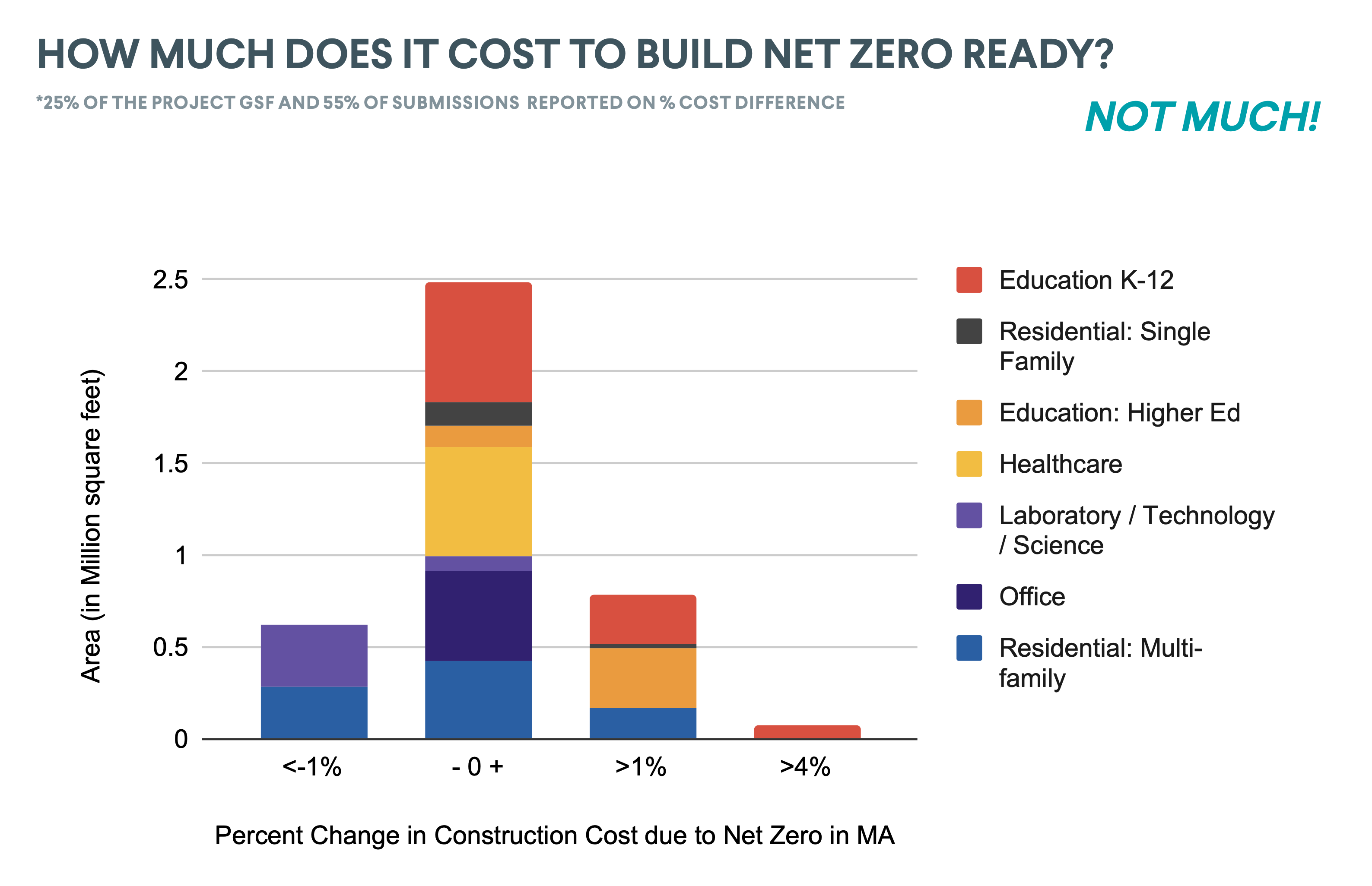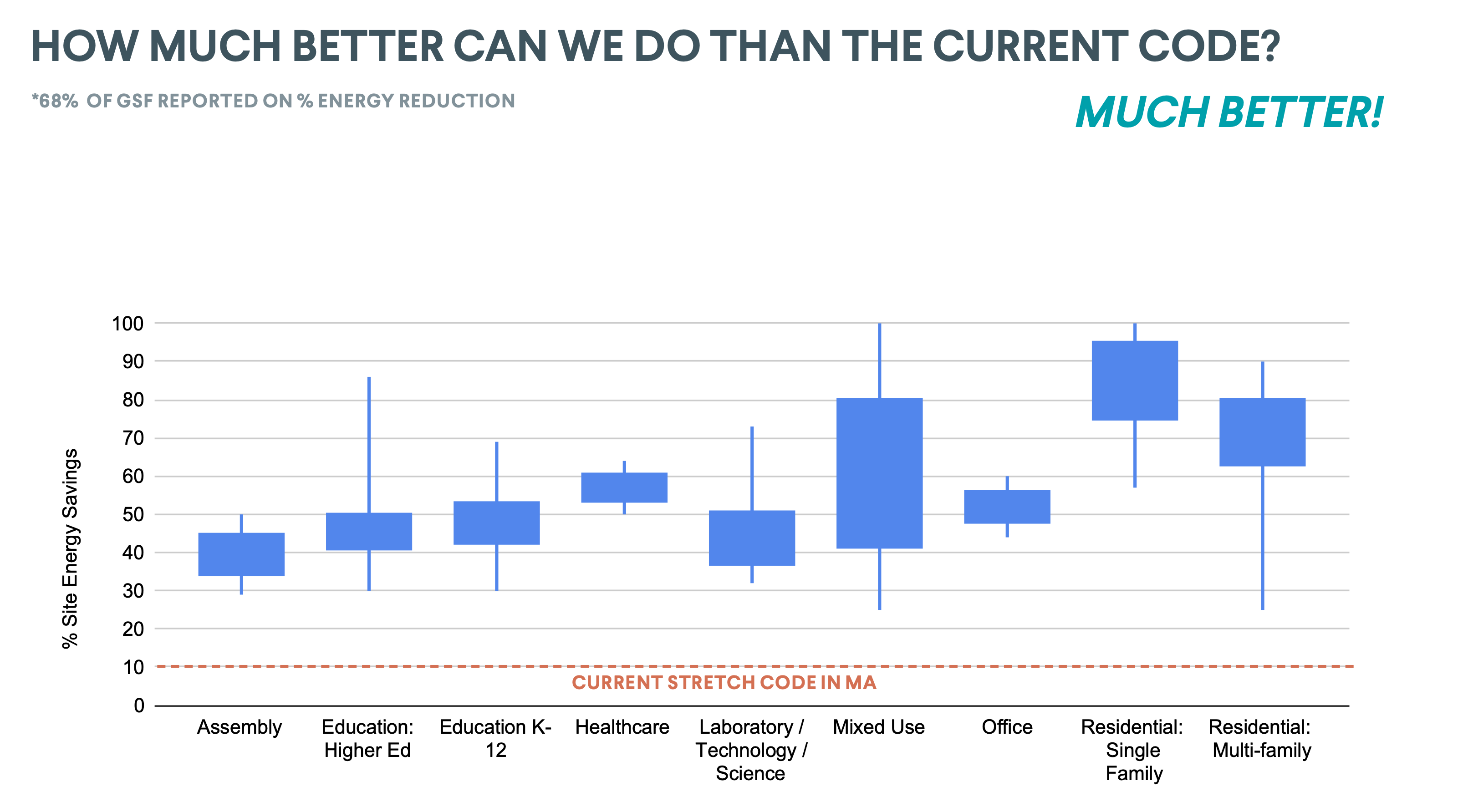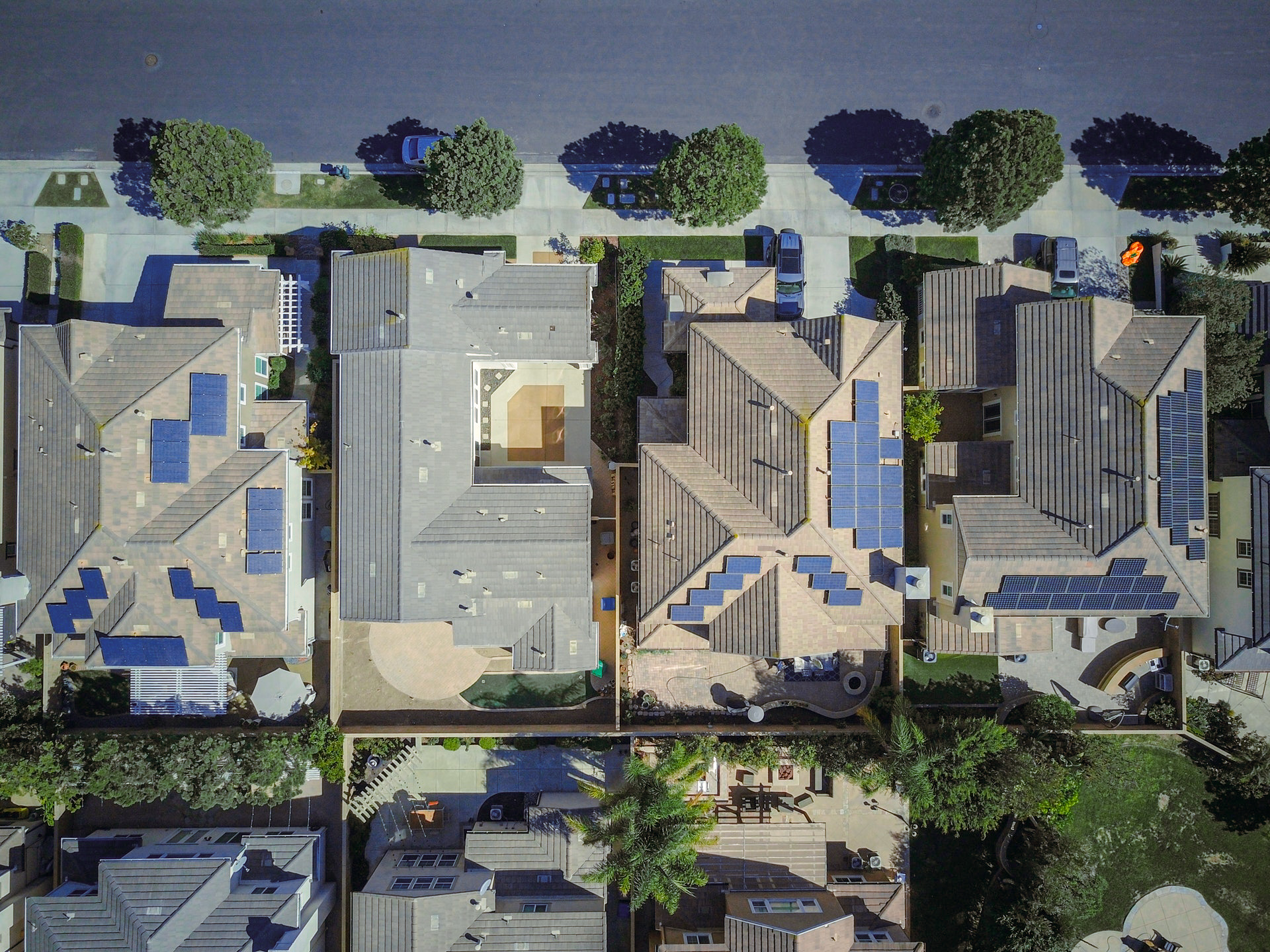For years, Meredith Elbaum has been hearing the same fear expressed about net zero and net zero construction: It simply costs way too much. “We wanted to find out if that is the case,” says Elbaum, executive director of Built Environment Plus (BE+), a Massachusetts-based nonprofit that drives sustainable design, construction, and operations of the built environment.
BE+ put out a call to Massachusetts’ building community for data on its net zero and net zero ready construction projects. Earlier this year, BE+ released its findings.
WHAT'S THE COST OF BUILDING NET ZERO READY?
Covering residential and commercial projects either completed or in process, the BE+ report considers net zero ready buildings that are located in Massachusetts, are highly energy efficient, and have all-electric heating (with an exception for healthcare facilities and laboratories that achieve at least a 90% reduction of fossil fuels). And the report includes net zero buildings that, in addition to the net zero ready criteria, procure on-site and/or off-site renewable energy to offset all of their energy consumption on a net annual basis.
What did BE+ learn about the cost of these green builds? Projects accounting for 4 million gross square footage (GSF) reported their cost data—and of those, 85% said it cost less than 1% more to achieve net zero ready. That’s consistent across all building types and sizes, including high-rises.

There a few reasons for that low cost premium, Elbaum says. The more that companies build in this way, the more experience they get and the easier it becomes. “They’re figuring out the magic sauce,” she says. That sauce involves net zero ready practices such as a well-insulated building envelope and an energy recovery system that brings in fresh air while exhausting stale air and recovers heat instead of letting it just leave the home.
But rather than simply adding on net zero ready practices and their costs, Elbaum says, these projects consider how green building practices achieve efficiencies—and how that can lead to savings. For instance, because a tight building envelope reduces the load on the heating and cooling systems, a home needs smaller, less expensive mechanicals. Or, as another example, window placement can be optimized, so rather than putting expensive windows where light and views aren’t needed, they’re placed where they have the biggest impact.
“It’s about thinking of the system holistically and where to shift dollars to make these buildings more affordable,” Elbaum says.
"We’re seeing an exponential increase in the companies doing this type of work." — Meredith Elbaum, Executive Director, Built Environment Plus
What has enabled the shift to net zero is electrification, Elbaum explains, in particular the advent of the electric heat pump. Think of your refrigerator, which keeps inside air cool by pumping hot air out. Likewise, heat pumps pull heat out of homes to keep them cool in the summer and pull in heat from outside to keep homes warm (yes, even in the winter). “Heat pumps are really efficient, so people are using way less energy,” Elbaum says.
Electrification also signals a shift in consumer attitudes. Gas heating and gas stoves used to be prized, while electricity was vilified. But that’s seeing something of a reversal, particularly in light of recent reports that gas stoves emit pollution into homes.
While BE+ relies on the building community to self-report, the number of projects in its 2022 study jumped significantly over the number in its 2021 report. The new study included 313 companies working on net zero—an increase of 135% over 2021. And the total known square footage for net zero and net zero ready projects in Massachusetts increased 130% over 2021, reaching 16.5 million GSF.
“That’s exciting because it means we’re seeing an exponential increase in the companies doing this type of work,” Elbaum says.
Notably, affordable housing makes up 78% of the residential net zero and net zero ready square footage, up from 54% in March 2021. That’s partly because of incentives, Elbaum says.

The efficiency benefits are clear, according to the report: 90% of these projects are at least 35% more efficient than Massachusetts’ current stretch-code baseline. That’s up from 82% in March 2021, with 26% more projects reporting energy data. Those are meaningful results for a state whose residential and commercial buildings emit 27% of greenhouse gas emissions.
It’s worth considering the BE+ report’s larger context: Massachusetts has pulled ahead as a leader in green building. In the past couple of years, it has ranked in the top three states for LEED-certified GSF per capita.
But Massachusetts can serve as a model for other areas of the country looking into net zero and net zero ready construction, Elbaum says. “We’re proving it out, and it’s a lot harder to do this in a heating climate than a cooling or more temperate climate,” she says. “If we can do this here, other areas can as well.”
To view the entire report, click the download button below.






